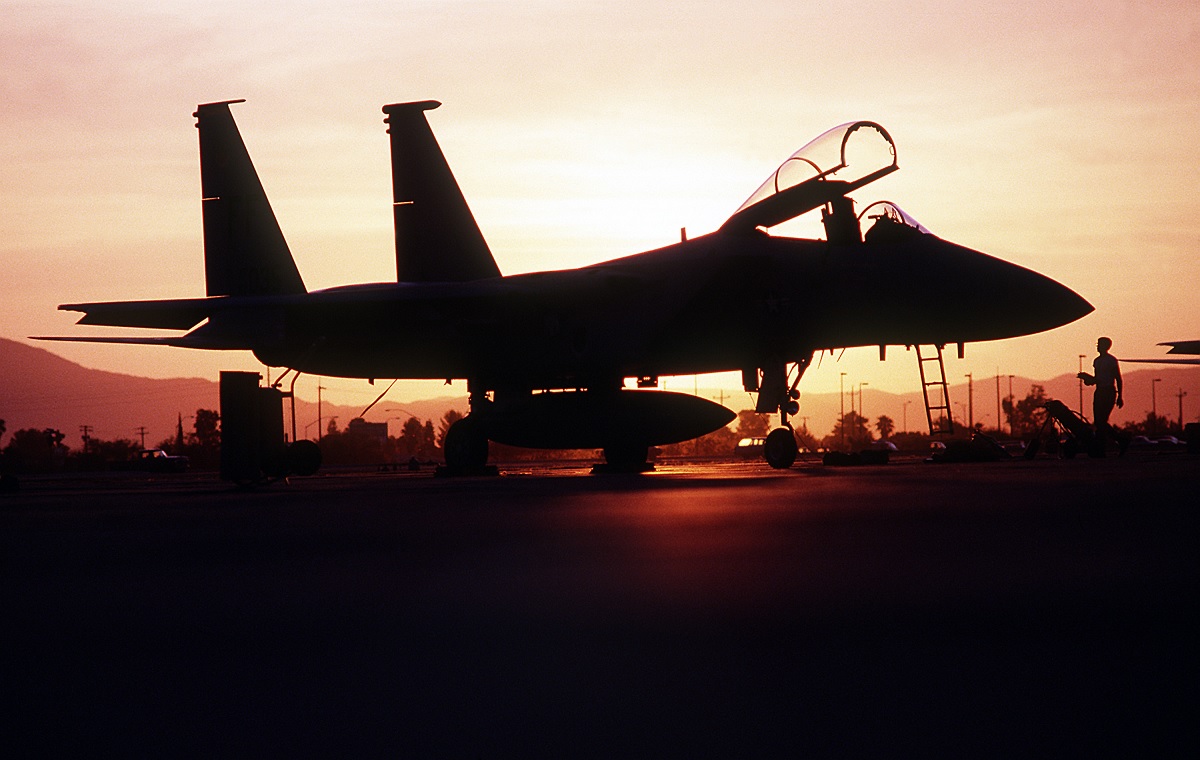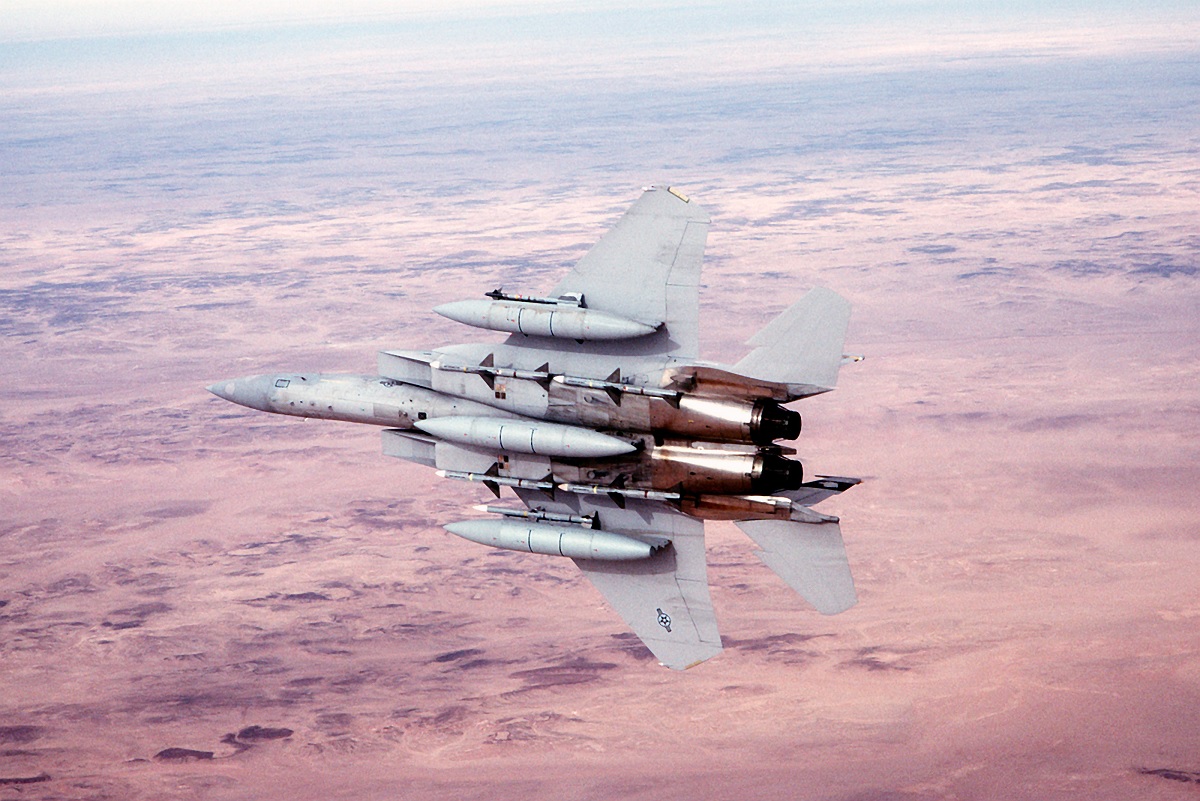During Operation Desert Storm, the F-15C Eagle fighters were responsible for 34 of the 37 USAF air-to-air wins
The F-15 Eagle is a tactical fighter designed to allow the United States Air Force (USAF) to gain and maintain air superiority over the battlefield in all weather conditions.
In support of Operation Desert Storm (ODS), the F-15C and D variants were deployed to the Persian Gulf in 1991, demonstrating their greater combat capability. The F-15C aircraft were responsible for 34 of the USAF’s 37 air-to-air victories.
When Iraq invaded Kuwait in August 1990, seeking to grab the country’s vast oil reserves, President George H. W. Bush dispatched ground, sea, and air forces to the region to stabilize the situation and urge Saddam Hussein to withdraw his invasion force.
Shortly after the invasion, Lt. Col. William Thiel, commander of the 58th Tactical Fighter Squadron (TFS), received word that his unit would be called to deploy.
“We were going to deploy to a base… next to the Red Sea,” Thiel said. “The mission to get over there was nonstop, about 15 hours in the air. That’s a long time to be sitting down. We almost needed a crane to get us out of the cockpit, because we’re all kind of stiffed up.”
With 769 men and 24 F-15C Eagles, the 33rd Tactical Fighter Wing (TFW) began flying Operation Desert Shield sorties from northwest Saudi Arabia in late August.
Airmen familiarized themselves with desert terrain and took part in combined training with aircrews from the US Navy and the Royal Saudi Air Force during this operation. According to Security Council Resolution 661, the United States’ goal was to stop Iraq’s invasion and occupation of Kuwait and restore Kuwait’s sovereignty, independence, and territorial integrity.

Before they deployed, the 58th TFS underwent two combat training exercises, Red Flag in Las Vegas and Maple Leaf in Canada, which replicated wartime aviation tactics, according to Thiel.
“[Deploying] was a bit scary because you’re always worried about a lot of things but we were very well prepared,” said Thiel.
The Nomads initiated Operation Desert Storm with a surprise attack over Baghdad at 12 a.m. on January 17, 1991. They aimed to clear the skies over Bagdad of hostile aircraft and create a “corridor” for a second group to strike.
Capt. Jon Kelk, a 58th TFS pilot, scored the war’s first aerial kill, destroying a MiG-29 twin-engine fighter jet with an AIM-7 Sparrow medium-range air-to-air missile during the initial strike. Capt. Robert Graeter, a 58th TFS pilot, shot down two Iraqi Dassault Mirage F1s shortly after for the war’s second and third kills.
Capt. Rhory Draeger, 58th TFS pilot, and Capt. Charles Magill, 33rd USMC exchange officer, intercepted and destroyed two MiG-29s west of Baghdad later that day.
Capt. Larry Pitts, a 58th TFS pilot who flew in these flights, claimed his comrades met him and other aircrew members with relief and joy after the first sortie in a post-deployment interview with Air Force Public Affairs.

“Everyone was pretty excited, even more so because we were able to bring everyone back home,” said Pitts. “It was our first combat sortie and we actually expected a pretty sophisticated threat from the [enemy]. Everyone was glad all of us came home.”
Until President Bush issued the cease-fire order on February 27, 1991, nomads continued to have an impact on the battle. The Gulf War came to an end on March 3rd.
The 58th TFS had the most aerial victories (twelve) and the most pilots with multiple wins (four) in a single squadron. In direct support of US objectives, they flew 1,182 sorties and clocked almost 7,000 combat hours.
The most memorable part of the battle for Thiel, however, was returning home with the same number of people and planes they deployed with – no deaths.
“War is a terrible thing, but if you have to go to war it’s nice to go to one where you’re well prepared. You can do your job and bring everybody home,” Thiel said. “We so overmatched the enemy, which made it less frightening, and we were able to do a great job and be very effective.”
The Nomads have a long history of air dominance, with their exploits in Operations Desert Shield and Desert Storm securing the Gulf War’s initial aerial wins.

Source: Nomad’s legacy in Desert Storm, by Senior Airman Andrea Posey, 33rd Fighter Wing Public Affairs and U.S. Air Force; Photo by U.S. Air Force

